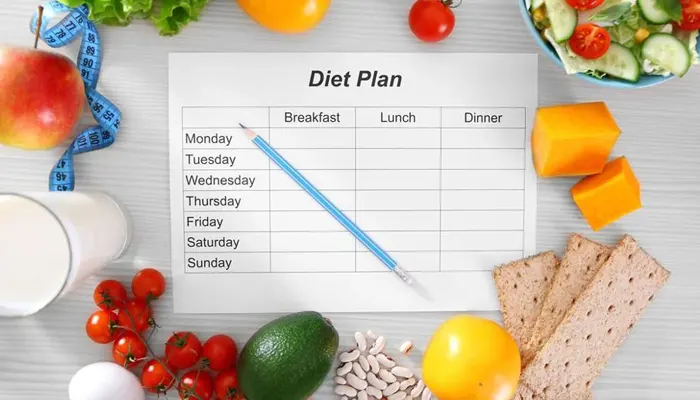Cut calories like a fitness guru: How to calorie deficit for a healthy life
- Sanjukta
- 1 year ago
- 4 minutes read

Being in a calorie deficit is about having a disciplined approach to healthy eating
Ever wondered how fitness gurus stay in top shape? A big part of the secret lies in mastering the art of the calorie deficit. This simply means burning more calories than you consume, which is key to weight loss. But creating a calorie deficit the right way is essential for maintaining your energy and health. Here’s how you can cut calories like a pro and create a sustainable calorie deficit for a healthier life.
Understand Your Calorie Needs: Start with the Basics
Before you can create a calorie deficit, it’s important to know how many calories your body needs to maintain its current weight—known as your maintenance calories. You can estimate this using an online calculator, a fitness app, or by consulting with a nutritionist. Once you know your maintenance level, aim to reduce your intake by 500–750 calories per day for gradual, sustainable weight loss.
Use Apps to Track Your Calories: Technology to the Rescue
In today’s digital age, there are plenty of apps designed to help you track your calorie intake and stay on top of your weight loss goals. By using fitness apps, you can easily see how many calories you’re consuming and burning, helping you stay on target with your calorie deficit. Many of these apps also offer barcode scanners and extensive food databases, making it simple to log your meals accurately.
Make Smart Food Swaps: Little Changes, Big Impact
You don’t need to overhaul your entire diet to cut calories—small, smart swaps can make a huge difference. For example, replace sugary drinks with water or herbal tea, opt for whole grains instead of refined carbs, and choose lean proteins like chicken or tofu over fattier cuts of meat. These changes can slash hundreds of calories from your daily intake without making you feel deprived.
Fill Up on Fiber: Stay Satisfied Longer
Fiber-rich foods such as fruits, vegetables, and whole grains help you feel fuller for longer, which can naturally reduce your calorie intake. Fiber slows down digestion and stabilizes blood sugar levels, preventing those hunger pangs that lead to overeating. Load up your plate with fiber-rich foods to stay satisfied while cutting calories.

Focus on Portion Control: Quality Over Quantity
Even healthy foods can contribute to weight gain if you eat too much of them. Pay attention to portion sizes, and try using smaller plates to trick your brain into thinking you’re eating more. It’s also helpful to measure out servings, especially for calorie-dense foods like nuts, oils, and cheese. By controlling portions, you can enjoy a variety of foods while maintaining a calorie deficit.
Don’t Skip Meals: Fuel Your Body Right
Skipping meals might seem like a quick way to cut calories, but it can backfire by slowing down your metabolism and leading to overeating later. Instead, aim for balanced meals that include protein, healthy fats, and fiber to keep you energized throughout the day. Eating regularly also helps stabilize your blood sugar levels, preventing those mid-afternoon energy crashes.
Move More: Boost Your Calorie Burn
Creating a calorie deficit isn’t just about cutting calories from food—it’s also about increasing your calorie burn through physical activity. Incorporate more movement into your day, whether it’s through structured workouts, walking, or even just taking the stairs instead of the elevator. Fitness apps can also track your activity levels, helping you see how much you’re burning and encouraging you to stay active. The more you move, the easier it is to achieve and maintain a calorie deficit.
Stay Hydrated: Water, Your Weight Loss Ally
Sometimes, what feels like hunger is actually thirst. Drinking plenty of water throughout the day can help you avoid unnecessary snacking and keep your metabolism running smoothly. Plus, water has zero calories, making it the perfect drink to support your calorie-cutting efforts. Aim for at least eight glasses a day, and more if you’re active.
Track Your Progress: Keep Yourself Accountable
Tracking your food intake, exercise, and progress is crucial for staying on course. Apps make it easy to log your meals, monitor your activity, and see your progress over time. Keeping a food diary or using a calorie-tracking app can help you stay motivated and identify patterns that might be sabotaging your efforts.
Be Patient: Slow and Steady Wins the Race
Healthy weight loss takes time, so be patient with yourself. Aim to lose about 1–2 pounds per week, which is a safe and sustainable rate. Remember, it’s not about quick fixes—it’s about making lasting changes that support your overall health and well-being.












